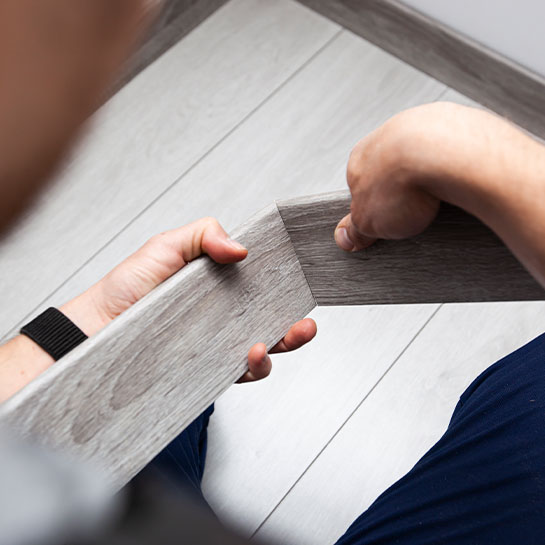Antique tile floors are a design gem, known for their intricate patterns and vibrant colors. These floors, popular until the mid-20th century, are back on trend thanks to their timeless aesthetic and the personality they bring to any space. However, over time, these floors can suffer damage such as cracks, wear and stains that detract from their beauty. Fortunately, there are solutions for their recovery and rehabilitation, and in this article we will explain how to return these floors to their original splendor using specialized products from paratureforma.com.
What are antique hydraulic floors?
Hydraulic tiles are handcrafted pieces made of cold-pressed cement, pigments and marble, without the need for firing. Their manufacture began in the 19th century and they were widely used in homes and buildings until the 1970s. Today, they have re-emerged in decoration due to their retro style, becoming a highly demanded option for those looking to give a unique touch to their spaces. The main characteristic of these floors is their durability, but they are also susceptible to the passage of time, making them perfect candidates for restoration.
How to identify a damaged old hydraulic floor
Before beginning restoration, it is essential to assess the condition of the hydraulic floor. Look for signs of deterioration such as:
- Cracks: they can be superficial or deep, affecting both aesthetics and structure.
- Stains: from moisture or chemicals that have penetrated the tile.
- Loss of color: floors that have lost their original shine or hue due to wear and tear. Identifying these problems will help you decide between a full or partial restoration.
Step by step for the restoration of hydraulic soils
-
Deep Cleaning
The first step to rehabilitate a hydraulic floor is a thorough cleaning. Tiles often accumulate dirt, traces of old waxes, or even salt efflorescence that dull their colors. For this process, it is recommended to use specific cleaners that do not damage the material, such as degreasers or strippers depending on the type of stain. In paratureforma.com, we have effective products to remove residues of work or clean very dirty tiles, restoring its original appearance without causing damage.

-
Repair of Damaged Tiles
If broken or cracked tiles are detected during the inspection, it is important to repair them with specific mortars for hydraulic tiles. This type of mortar is designed to withstand the conditions of this material and ensure a long-lasting restoration. In cases where the tiles are very deteriorated, paratureforma.com offers replacement alternatives for your floor, allowing you to recover the design without compromising the aesthetics of the space.

-
Pattern and Color Restoration
Steam cleaning techniques or pigment revitalization products can be used to restore tile gloss and color. These techniques remove surface layers of dirt without affecting the underlying design, allowing the tiles to regain their original appearance.
-
Sealing and Protection
Once restored, it is essential to apply a sealer to protect the floor from future damage. Hydraulic floors are porous, so proper sealing will prevent new stains and wear and tear from daily use. There are two main options: wet-effect sealer, which enhances colors and provides a satin finish; or clear sealer, which maintains the floor’s natural matte finish. These products ensure high quality protection and prolong the life of the restored floor.

Advantages of restoring old hydraulic floors
Restoring an old old hydraulic floor offers several important advantages:
- Economical savings: rehabilitation is much more economical than replacing the entire floor.
- Historical and aesthetic value: these floors have a charm that is difficult to match with modern materials.
- Revaluation of the property: a restored floor improves the aesthetics and value of your home, making it more attractive.
Key products for hydraulic floor restoration
For a successful restoration, you need the right products:
- Specific cleaners: remove stubborn stains and old wax residues without damaging the material.
- Repair mortar: fills cracks or repairs broken tiles while maintaining their structure.
- Sealers and protectors: protect the floor from future damage, preserving its original beauty.
Common mistakes when restoring hydraulic floors and how to avoid them
The restoration of hydraulic floors may seem simple, but there are mistakes that can compromise the result:
- Use of unsuitable products: many commercial cleaners can damage tiles.
- Failure to seal properly: if the proper sealer is not applied, the floor will be more prone to stains and wear.
- Improper repairs: not using the correct mortar or not aligning the tiles properly can affect durability.
When is it better to replace than to restore hydraulic tiles?
Sometimes, restoration is not feasible due to the condition of the floor. If the damage is extensive or the tiles have completely lost their pattern, it is better to opt for replacement. In our catalog you can find a wide variety of options to suit your floor’s needs.
Regular subsequent maintenance of the floor
Once the restoration is complete, regular maintenance is crucial to preserve the beauty of the floor. Frequent sweeping and vacuuming, along with cleaning up any spills immediately, will prevent stains from setting into the tiles. In addition, it is advisable to apply an environmentally friendly liquid wax from time to time to maintain the shine and provide an additional layer of protection against scratches and fingerprints.
Restoring an antique tile floor is not only a task that restores beauty and functionality to a space, but also preserves a piece of history. With the right products and a careful process, you can revitalize your home and make this type of flooring last for generations. At paratureforma.com, we offer everything you need to ensure a quality, long-lasting restoration.
How long does a restored hydraulic floor last?
A properly restored and sealed hydraulic floor can last for decades. Regular maintenance is key to prolonging its life and preserving its beauty.
Is it possible to restore a hydraulic floor without removing the tiles?
Yes, in many cases a restoration can be done without lifting the tiles, applying a deep cleaning, surface repairs and adequate sealing to protect them.
What products should I avoid when cleaning old hydraulic floors?
You should avoid acidic or abrasive cleaners, as they can damage the tiles. It is better to opt for specific products for hydraulic floors, which maintain their integrity.
What do I do if some tiles are unrecoverable?
If some tiles are too damaged to be restored, you can replace them with replicas of similar design, available at specialty stores such as paratureforma.com.
How often should I apply wax or sealer to a hydraulic floor?
To keep the floor in optimal condition, it is advisable to apply a coat of wax or sealer every 1-2 years, depending on daily wear and tear.


